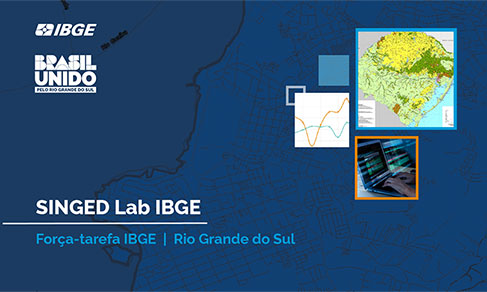IPP
Industrial prices rise 0.35% in March, second rise after dropping for three months
April 30, 2024 09h00 AM | Last Updated: April 30, 2024 02h19 PM

For the second time on the positive side, after dropping for three months, the prices of the national industry rose 0.35% in March 2024 over February. Therefore, the Producer Price Index (IPP) accumulates gains of 0.25% in the year, though it is still on the negative side in the cumulative index over the last 12 months (-4.13%). The rate had been -0.65% in March 2023.
In March 2024, 17 out of 24 industrial activities surveyed recorded positive price changes against the previous month, following the change observed in the overall industry. In February, 14 activities had risen their average prices in relation to the previous month. The data were released today (30) by the IBGE.
“The major highlight in terms of influence was the chemical sector, which rose 2.06%. This rise was caused by products derived from the petroleum chain. We are watching a rise in the prices of the oil barrel in the last months, causing a cost pressure on the prices of the derivatives. It is coupled with an increase in the demand, especially from China, which faces an industrial upturn, as well as due to the logistic challenges in the foreign market. It affects products derived from naphtha and from resins and elastomers, inputs for the manufacture of plastic material,” explains Murilo Alvim, an IPP analyst.
The chemical sector stood out both due to its magnitude, the second most intense change in this type of comparison, and to its contribution to the overall result of this same indicator. Contributing with 0.16 pp to the change of 0.35% of the overall industry, the chemical sector exerted the major influence on the IPP compared with February.
Besides other chemicals, the industrial activities accounting for the biggest changes in March were wearing apparel (2.65%), pulp and paper (1.92%) and toiletries, soaps and cleaning products (-1.46%). Besides other chemicals (0.16 pp), the highlights in terms of influence were the sectors of petroleum refining and biofuels (0.10 pp), food products (-0.09 pp) and pulp and paper (0.06 pp).
Having risen 0.93%, the refining sector follows the same effect of the petroleum chain. Among the petroleum derivatives, the highlights are aviation kerosene and fuel oils. “Biofuels can also be highlighted, especially alcohol, which has been pressed by the increase in the demand,” says the analyst of the survey.
Food deflation registered in any indicator
The food sector, which is among the major influences on the overall result of industry, dropped 0.38%, the third negative figure in a row. As a result, it changed -2.21% in the cumulative index in the year (in March 2023, it had been -0.61%). As happening since April 2023 (-0.80%), the cumulative index in 12 months remained on the negative side (-4.36%).
“The food sector fell in all the months in 2024. The drop of -0.38% is not too significant in terms of change, though it is significant in terms of influence, due to the weight of this sector, standing among the major influences and the only one to press the result downward. Lower prices were perceived in any comparison, both in the month and in the cumulative indexes in 2024 and in the last 12 months. A deflation in the food products might be considered from the point of view of industrial producers of food in Brazil,” highlights Alvim.
Iron ore restrains rise in mining and quarrying industries
After three consecutive months with an average positive change in the prices, the activity of mining and quarrying industries showed a significant negative change as well. As a result, the cumulative index in the year retreated from 6.52% in February to 5.41% in March. In the comparison between March 2024 and March 2023, the result, positive as it has been since December 2023 in the cumulative indicator in 12 months, was 1.19%, the lowest one among those four.
“Although the petroleum sector was important to explain the rise in the chemical and refining activities, the mining sector dropped 1.04% because the product with the highest weight, iron ore, dropped. In January, the mining sector had risen 4.64% and, in February, 1.79%. The drop in March does not offset the gains in 2024 and it still maintains the mining sector as the major positive change in the cumulative index in the year,” says Alvim.
Having risen 1.92%, the sector of pulp and paper suffered the impact of the rise in the international prices and of interruptions in the supply chain and shutdown in some ports, which retracted the world supply of pulp. “Brazil also suffers the impact of the rise of the dollar, which rose 0.3% this month and accumulates an advance of 1.7% in the year,” completes the analyst of the survey.
Among the major economic categories, the price changes between February and March 2024 affected them as follows: 0.18% in capital goods, 0.53% in intermediate goods and 0.12% in consumer goods, being the change reported in durable consumer goods of -0.09% and that in semi and non-durable consumer goods, of 0.16%.
Know more about the IPP
The IPP aims at measuring the average change of sale prices received by the domestic producers of goods and services, as well as their evolution over time, signaling the short-term inflationary trends in Brazil. It is a key indicator for the macroeconomic follow up and, consequently, a valuable analytical instrument for decision makers, either public or private.
The survey investigates, in a few more than 2,100 enterprises, the prices received by producers, free from tax, tariffs and freight, defined according the most usual commercial practices. Nearly 6 thousand prices are collected monthly. The complete IPP tables with results are available at Sidra. The next release of the IPP, related to April, will be on May 28.




















